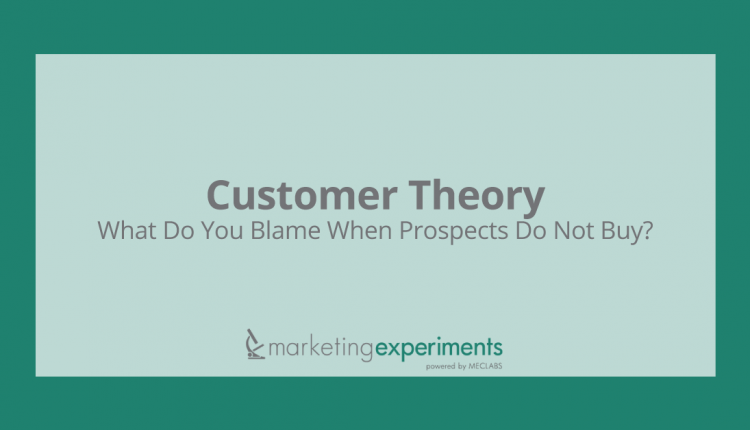The effort and money that you’re investing in your marketing is predicated on one thing – that you understand your customer.
What good is a print ad, an email or a marketing automation investment if it doesn’t deliver a message that alleviates a customer pain point or helps a customer achieve a goal? They won’t act if the message doesn’t hit them square between the eyes.
Let me give you an example of faulty customer theory. Uber, a mobile car hailing service, is coming to Jacksonville. I recently received a push poll phone call clearly supported by the frightened taxi industry.
The main message seemed to be that Uber is cheaper because it uses unregulated (and, therefore, unsafe) drivers.
How often are you delighted by cab drivers?
What struck me was how far off their customer theory was from my actual wants and needs. I, for example, chose to take the BART from the airport to the hotel for Lead Gen Summit 2013 – not because it was cheaper (MECLABS was paying the bill either way, so it was free for me), but because riding in a cab is a miserable experience.
Plus, I’m putting my life in the hands of someone who will cut across three lanes of rush hour traffic with no turn signal to drop a passenger off 45 seconds quicker. Goodbye, safety argument.
The reason Uber, Lyft and other car hailing mobile apps are gaining traction is because they’ve found a way to create a better customer experience. Think about it. When was the last time you were delighted by a cab ride? In fairness, there was one time for me in Los Angeles. A kind driver gave me a quick tour of Bel Air during what limited free time I had on a business trip.
Here’s why the taxi industry struggles to realize the true threat.
We will tend to blame external rather than internal reasons when customers don’t buy
You put in so much time marketing your company and your clients that it becomes difficult to see the flaws customers see with unbiased eyes.
This is why A/B testing can be so valuable.
Actually forming hypotheses, testing these hypotheses in real situations with real customers, and then building a customer theory over time that informs everyone in your company about what customers really want is essential.
When you have your customer theory right, marketing can focus on clearly communicating how it can fulfill customers’ needs and wants.
Discover what customers want
Of course, A/B testing is only one way to gain customer intelligence. So to gain a perspective beyond my own, I asked Lindsay Bayuk, Senior Product Marketing Manager, Infusionsoft, for her perspective.
“Understanding what your customers want starts with understanding the problem they are trying to solve. First, define who your best customers are and then ask them about their challenges. Next, ask them why they love you,” Lindsay said.
Lindsay said some great ways to collect both quantitative and qualitative data on your target customers include:
- Surveys
- Interviews
- A/B tests (see, I was telling you)
- Sales calls
- Feedback loops
The email registration process is another opportunity for learning more about your customers.
Ali Swerdlow, Vice President, Channel Sales & Marketing, LeadSpend, added, “Preference centers are a great way to gather data about your customers. Then, use that data to segment your list and message different groups accordingly.”
Then deliver on it
Of course, it’s not enough to know what customers want.
“Ensure you’re serving your subscribers with relevant content,” Ali said. “My boyfriend doesn’t want daily deal offers for Brazilian waxes or mani/pedis. Take the time to ask your subscribers when they want to hear from you and the content they’re most interested in receiving. You’ll have a much more engaged audience and a more loyal brand following.”
You might also like
Web Optimization Summit 2014 in New York City Call for Speakers – Tell us how and what you’ve learned about your own customers
6 Easy Steps for Getting the Most from Your Customer Survey [via Infusionsoft]
MarketingSherpa Talks to LeadSpend & Experian Marketing Services About Inactive Email Subscribers & the Resulting Deliverability Challenges [via LeadSpend]
Customer Theory: How we learned from a previous test to drive a 40% increase in CTR [More from the blogs]



